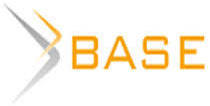CULT OF THE HORSE AMONG THE UZBEK PEOPLE OF THE FERGANA VALLEY
The article focuses on the cult of the horse, a people's outlook about these fascinating creatures, which is one of the foundations of faith among the population. At the same time, the emphasis is on the results of field materials which the author collected and analyzed. Horse among domestic animals has a special place and the syncretic concept of horses has spread very widely. It indicates the exact data among horse breeders which is very important to determine the role of the horse in the beliefs and rituals of the Uzbeks of the Fergana Valley. You can get acquainted with the latest field materials which are first discussed after several years. Among them are folk games associated with horses and folk beliefs and omens, as well as the symbolic meaning of the color of horses. The data at the beginning of the 20th century is compared with the latest information. The conclusion about the worldviews of the inhabitants of the Fergana Valley about horses and the mythology of horses is given.

















While nobody left any comments to this publication.
You can be first.
Abdulakhatov, N. U. (2008), Farg’ona vodiysi aholisiturmush tarzida ziyoratning o’rni [The place of pilgrimage in the daily life Ferghana valley people], Tashkent, Uzbekistan (in Uzbek.).
Agafonova, G. А. (1982), О chyom rasskazivayut naskalniye risunki [What cave paintings tell], Frunze, Kyrgyzstan (in Russ.).
Ashirov, А. (2007), O’zbek khalqining qadimiy e’tiqod va marosimlari [Ancient beleifs and rituals of Uzbek nation], Tashkent, Uzbekistan (in Uzbek.).
Avesto: Yasht kitobi (2001), М. Iskhoqov tarjimasi [The book of Avesta Yasht], Orient, Tashkent, Uzbekistan (in Uzbek.).
Bakhronova, D. K. (2018), Аntropozoomorfizmlarning lingvokulturologik khususiyatlari [Lingvocultural characters of anthropomorphism], Science and Technology, Tashkent, Uzbekistan (in Uzbek.).
Chittick, W. C. (2009), “The wisdom of animals”, Journal of the Muhyiddin Ibnʻ Arabi Society, Vol. 46, 27-37.
Durkheim, E. (1995), The Elementary Forms of the Religious Life. The Free Press, New York, USA.
Geertz, C. (1973), The Interpretation of Cultures. Basic Books, New York, USA.
Ingold, T. (1994), What is an Animal? Routledge, London and New York.
Ismailov, A. (2014), “Totemic foundations of the Uzbek anthroponomy” (in Eng.), MotifAkademiHalkbilimiDergisi (Temmuz-Aralık), Turkey, 2, 313-320.
Kamad, I. (2006), Оbryadovayastorona kultov Drevney Gretsii [The ceremonial side of the Cults of Ancient Greece], Moscow, Russia (in Russ.).
Karmisheva, B. Kh. (1954), Uzbeki-lokaytsi Yuzhnovo Tadjikistana [Uzbek-Lakays of Southern Tadjikistan], Academy of Science of Tadjik SSR Publishing, Stalinabad, Tajikistan (in Russ.).
Karmisheva, B. Kh. (1972), Ocherki etnicheskoy istorii Yuzhnykh rayonov Tadjikistana i Uzbekistana [Essays on the ethnic history of the southern regions of Tajikistan and Uzbekistan], Nauka, Moscow, Russia (in Russ.).
Kharitonov, М. А. (2000), “Оbraz volka v sotsiokulturnoy traditsii narodov Tsentralnoy Azii” [The image of the wolf in the socio-cultural tradition of the peoples of Central Asia], Ph.D. Thesis, BGU, Ulan-Ude, Russia (in Russ.).
Khaytun, D. E. (1958), Тotemizm. Ego sushchnost i proiskhozhdenie [Totemism. Its essence and origin], Stalinabad, Tajikistan (in Russ.).
Khikhluha, V. and Moshna, N. (2015), “The origin of the ancient Egyptian religion. Early beliefs”, GYLIMI-KE MAGAZINE. OLKETANU, 3-4, 53-57 (in Russ.).
Lang Jeang. (1914), A book of Myths, G.P. Putnam’s sons, New York, USA.
Malikov, А. М. (2018), Tyurkskiye etnonimi i etnotoponimi doliniZarafshan [Turkic ethnonyms and ethno-names of the Zarafshan Valley], Tashkent, Uzbekistan (in Russ.).
Malozyomova, Ye. I. (2014), Оbrazy zhivotnykh v oformlenii iranskogo kholodnogo oruzhiya [Images of animals in the design of the Iranian cold weapons], Electronic Library of the Museum of Anthropology and Ethnography. Peter the Great (Kunstkamera) Russian Academy of Sciences [Online], available at: http://lib.kunstkamera.ru/files/lib/978-5-88431-271-5/978-5-88431-271-5_11.pdf (Accessed 4 April 2019) (in Russ.)
Mirzayev, Т. and Djurayev, M. (2001), “Avesto” mifologiyasi va o’zbek xalq og’zaki ijodi [Mythology of Avesta and folk of the Uzbek nation], Tashkent (in Uzbek.).
Myat Min and Cho Cho Zaw. (2016), “Animal care: An Islamic perspective with particular reference to unwanted pets – stray dogs and cats”,InternationalJournalof Business, Economics and Law, Vol. 9, Issue 5 (Apr.) (in Eng.).
O’zbekiston nomoddiy madaniy merosi ro’yxati, (2017) [The list of nonmaterial cultural heritage of Uzbekistan], Tashkent (in Uzbek. and in Eng.).
Potapov, L. P. (1953), Оcherki po istorii altaytsev [Essays on the history of Altaians], Academy of Science of USSR Publish, Мoscow, Leningrad (in Russ.).
Potapov, L. P. (1958), “The wolf in the old folk beliefs and signs of the Uzbeks”, Short message (Institute of Ethnography named after Miklouho-Maclay), Publishing House of the Academy of Science of the USSR, Moscow, Russia (in Russ.).
Satayev, R. (2016), Zhivotniye vculture Drevney Margiani [Animals in the culture of Ancient Margiana], Moscow, Russia (in Russ.).
Snesaryev, G. P. (1969), Relikty domusulmanskikh verovaniy i obryadov u uzbekov Khorezma [Relics of pre-Muslim beliefs and rituals among the Uzbeks of Khorezm], Moscow, Russia (in Russ.).
Sokolova, Z. (1972), Kultzhivotnykh v religiyakh [Cult of Animals in Religion], Moscow, Russia (in Russ.).
Sprishevskiy, V. I. (1951), Pogrebeniye s konyom serediny I tisyachiletiya n.e. obnaruzhennoe okolo observatorii Ulugbeka [Burial with the horse of the middle of the 1st millennium AD discovered near the observatory of Ulugbek], Тashkent, Uzbekistan (in Russ.).
Stilt, K. A. (2015), Animal Welfare in Islamic Law, Northwestern University of Chicago, USA.